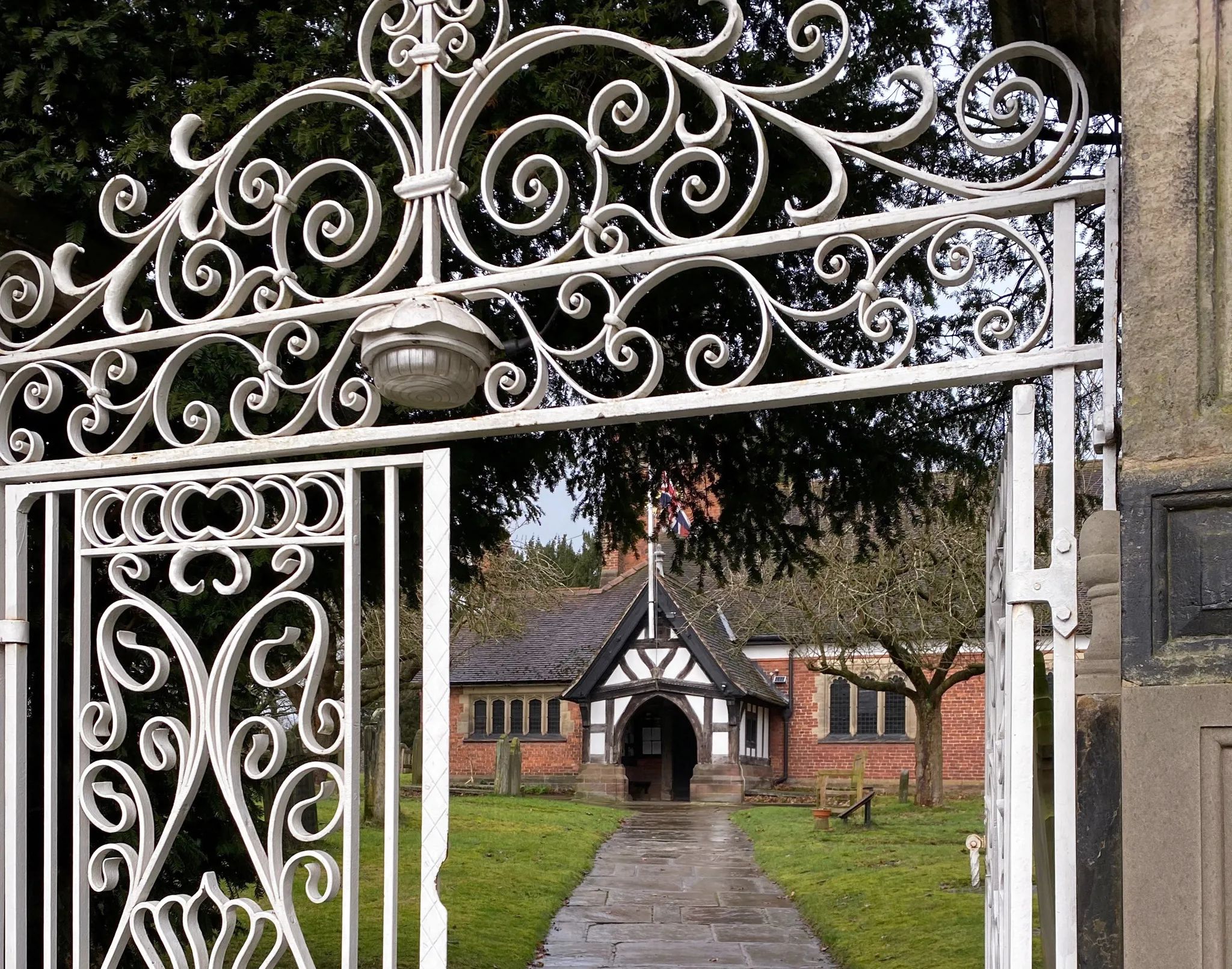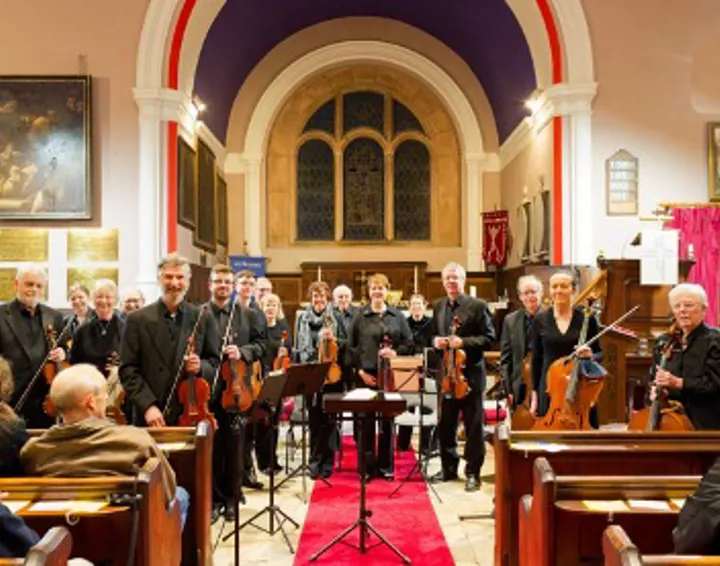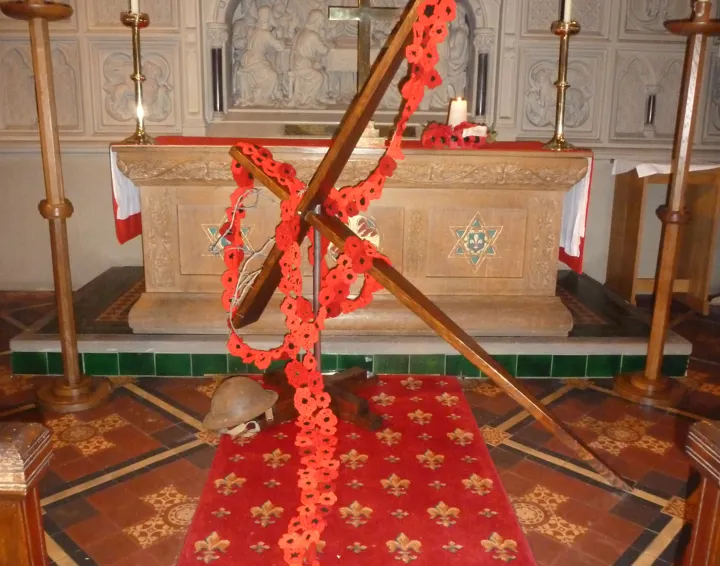St Mary’s Church History

There have been three churches on this site since the 14th Century. The present church was largely rebuilt in 1874 but its roof is supported by eight medieval wooden pillars and the door and doorway date back to 1728.
The history of St Mary’s Church begins with the laying of the foundation stone of the great Cistercian Abbey of Vale Royal by King Edward 1 and his wife Queen Eleanor in 1277.
The “capella” - the small chapel outside the monastery gate, ultimately became St Mary’s Church. When the parish of Whitegate was affirmed by an Act of Parliament in 1542 the church was made a parish church for the tenants of the monastery and others living round it. It was to be called the Church of Our Blessed Lady, the Virgin of Whitegate. Little is known about the appearance of the medieval building, although we do know that it was constructed of timber.
All the church documents were destroyed on the orders of Henry VIII and the churchwardens records now date from 1602.
Around about 1728 the church was extensively reconstructed in the Georgian classical style using brick. In 1874 it was re-worked again in the present Victorian Gothic style, retaining the original medieval wooden pillars and it’s Georgian door and exchanging it’s tower for a spire. The second Lord Delamere was the benefactor.
Outside the Church, at the south entrance to the churchyard, are a pair of fine classic gateposts dated 1736, with panelled sides and crowned by balls. The iron gates they enclose were given in memory of Miss Emily Katherine Cholmondeley by her family. The gates and columns were refurbished in 2004, funded by donations.
Points of interest in the Church:
- The South Door. The south doorway and door are Georgian, one of the few remaining parts of the church of 1728. The doorway is constructed in classic mouldings with a semi-circular head. The door, which is the same age, is an interesting example of studding.
- The King’s Arms. The fine coat of arms (in recognition of St Mary’s royal foundation), can be found on the wall high above the font. It was painted by Richard Bankes in 1660 at a cost of £3 10s 6d and replaced a previous coat of arms which was probably destroyed during the Commonwealth.
- The Window on the North Wall. The stained-glass window on the north wall is a Victorian depiction of Christ the King, the Alpha and Omega. Beneath Christ’s throne, in the central panel, a picture of St Mary’s Church can be seen.
- The Delamere Memorials. On the north wall of the choir stalls are two memorials to members of the Cholmondeley family, the Barons Delamere. Sir Thomas Cholmondeley of Vale Royal acquired the Rectory and Patronage of Whitegate in 1637 and Vale Royal Great House became the family seat of the Delamere family for just over 300 years until 1939. The vault of the Barons Delamere lies outside and adjacent to the church at its north east corner.
- The East Window. It depicts the main events of Christ’s life in five panels. On the left is the Nativity, then Christ’s Baptism in the River Jordan. In the middle is the Crucifixion, then the Resurrection and finally Christ’s Ascension into Heaven.
- The Reredos. Below the East Window and behind the Altar is the reredos. This finely carved scene in Caen stone depicts the Last Supper.
- The Sedilia. These are seats set into the wall to the right of the Altar to allow ministers to sit near the Altar during services.
- The Pulpit. The carved oak pulpit was new in 1663 when 10 pence was also paid for a pulpit hour-glass.
- The Millennium Banners. Blue banners hang from four of the wooden pillars in the church. They were designed by Carole Sweet of Whitegate and completed by a group of local people under her direction. They depict the Blessed Virgin Mary and her floral emblems and the Angel Gabriel, by whose Annunciation Mary learned that she was to be the Mother of Our Lord.
- Batik Parish Map. To celebrate the Millennium the parish created its own batik map based on aerial survey photographs of Whitegate. It was designed and executed by Janet Hey with help from members of the parish and took 18 months to complete. Batik is a technique which uses hot liquid wax and cold dyes to create a design on fabric. Around the central map are village scnes and the border is formed from a list of 400 names of dwellings in the parish at the start of the new millennium.
July 03, 2023
More Articles

Strings at the Abbey
The Vale Royal String Orchestra will hold their popular summer concert in the Great Hall at Vale Royal Abbey on Sunday 16th June at 7pm. Tickets on the door or from Andrew Ball.
Find out more
Remembrance Sunday Service
Come and join us at 9.30 am on 12 November as we remember those who gave their lives for our freedom.
Find out more